A little more than 20 years ago, Evan Marc Bartholomew, known as Bluetech, appeared on our sonic radar with some truly stunning electronic and highly musical creations: the track Elementary Particles and the album Sines and Singularities – intriguing titles, and captivating electronic music at its finest.
With Elementary Particles, Evan remembers “wanting to make intimate music that sounded like it was happening right inside your ear.”
“Most of Sines and Singularities was sketched out on a laptop, as I was touring the world at that time, grabbing moments in hotels and between gigs to get ideas out,” he recounts. A lot has happened in the past two decades, but for Evan, the Bluetech journey started long before.
“I started with classical piano at a very young age, around five. Other kids were into sports, but I was obsessed with music and wanted to be Mozart when I grew up.“
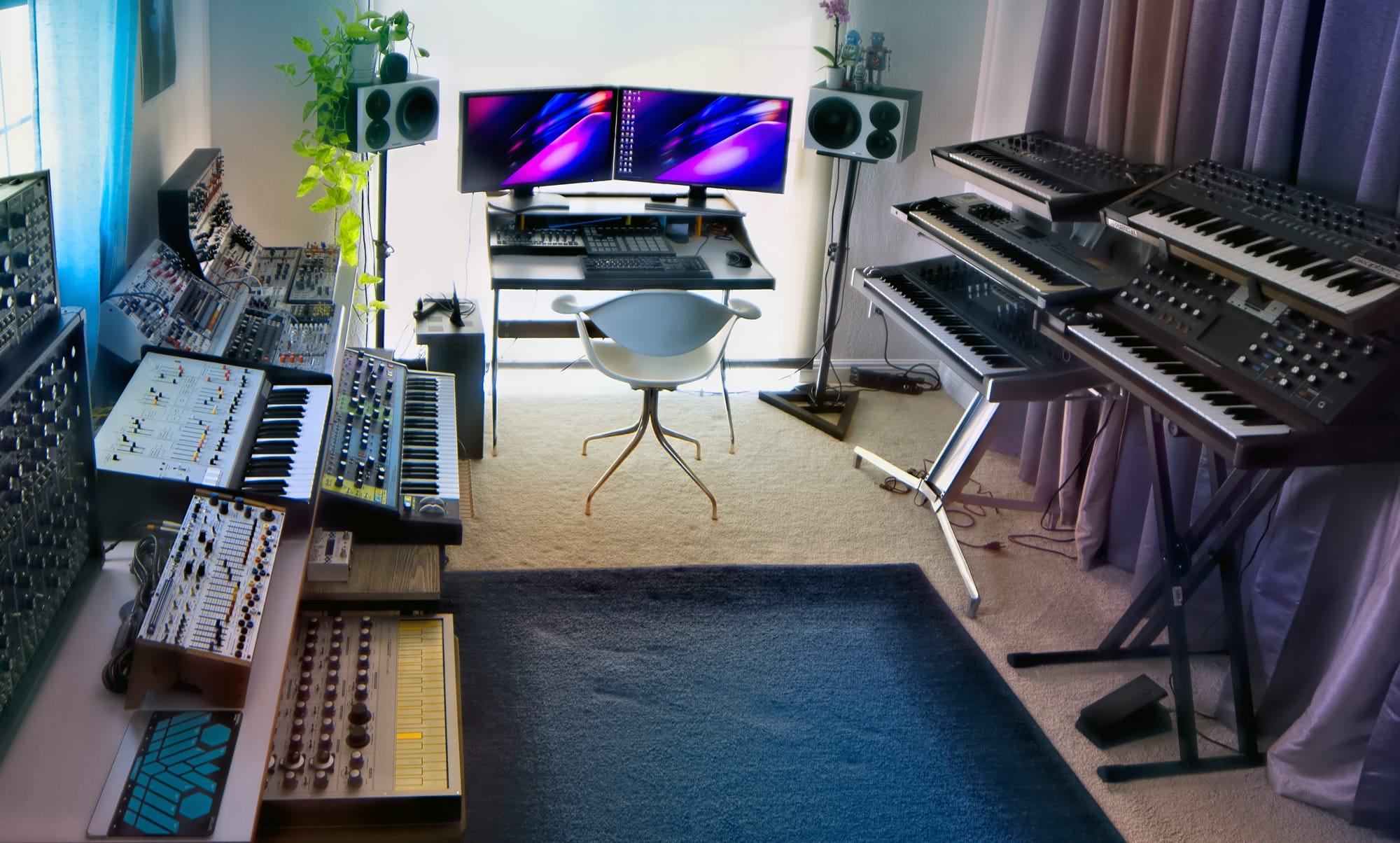
Guided by the music
Currently, Evan is most proud of his new album, the highly emotional and impressive Spacehop Chronicles 2, which we'll delve into further down in this interview.
“I really honed in and focused on my mixing skills and stretched out to create a warm and immersive palette, and I think I achieved it.
“It’s not so much a change in style as a deepening of my process – learning to trust my ears and my heart to be the guide when making production decisions. In that respect, it’s a big win for me – only being guided by the music and my intuition instead of thinking about how it will be received or if the fans will ‘get it’ or not.”
Leading up to this point, there have been many unforgettable moments in the Bluetech world, among them making an album with Steve Hillage, which was “definitely a high point” for Evan.
“Some of the gigs stick out over the years – playing on a huge stage on Mt. Fuji for a festival, a festival called Underwater Overground in Croatia, and then opening the main stage at Boom Festival in Portugal a few years ago.
“Other than gigs, I think it’s the really personal connections and stories people have shared about how something I created changed their life, or became the soundtrack to a special moment that they will never forget.”
“Clearly, that is not an attainable goal, but I do want to leave a legacy of music that is unique to my own vision and moves people.”

Spacey, dreamy, intricate...
In terms of genre, Evan isn't keen on putting labels on his music, except for descriptive adjectives:
“Genres and subgenres and microgenres are so specific, I don’t think I particularly fit into any of them perfectly. I often just say my music is downtempo, though I also create ambient and dance music, so that’s not necessarily a good fit either. I think spacey, dreamy, organic, intricate, and warm would all be good signifiers?
“I don’t rely on any specific gear for any style, and my kit changes often as I explore new ideas and ways of doing things. I tend just to write what I feel, and use whatever tool is required to create that specific sound.
“Even if I’m not using modular, I’m thinking in a modular way – how to fit all the puzzle pieces together into a compositional complexity that complements the idea I’m trying to express.”
Honing in on analog sound creation though, Evan founded and runs Behind The Sky – a record label “focused on electronic music made with analog and modular synthesizers with a distinctly melodic sensibility” featuring artists such as Lisa Bella Donna, Dark Sparkler, Johnny Woods, Nigel Mullaney, and Steve Roach.
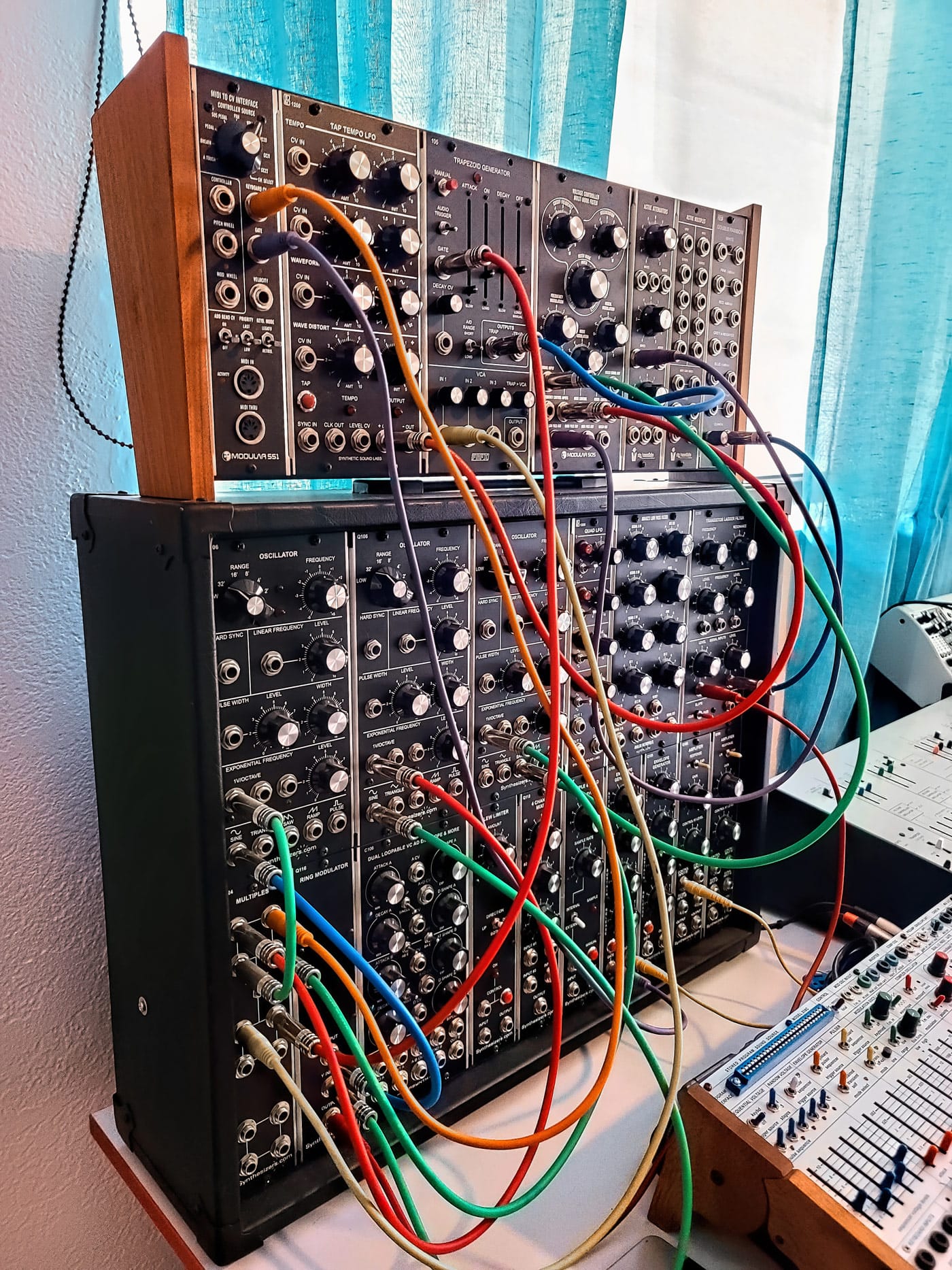
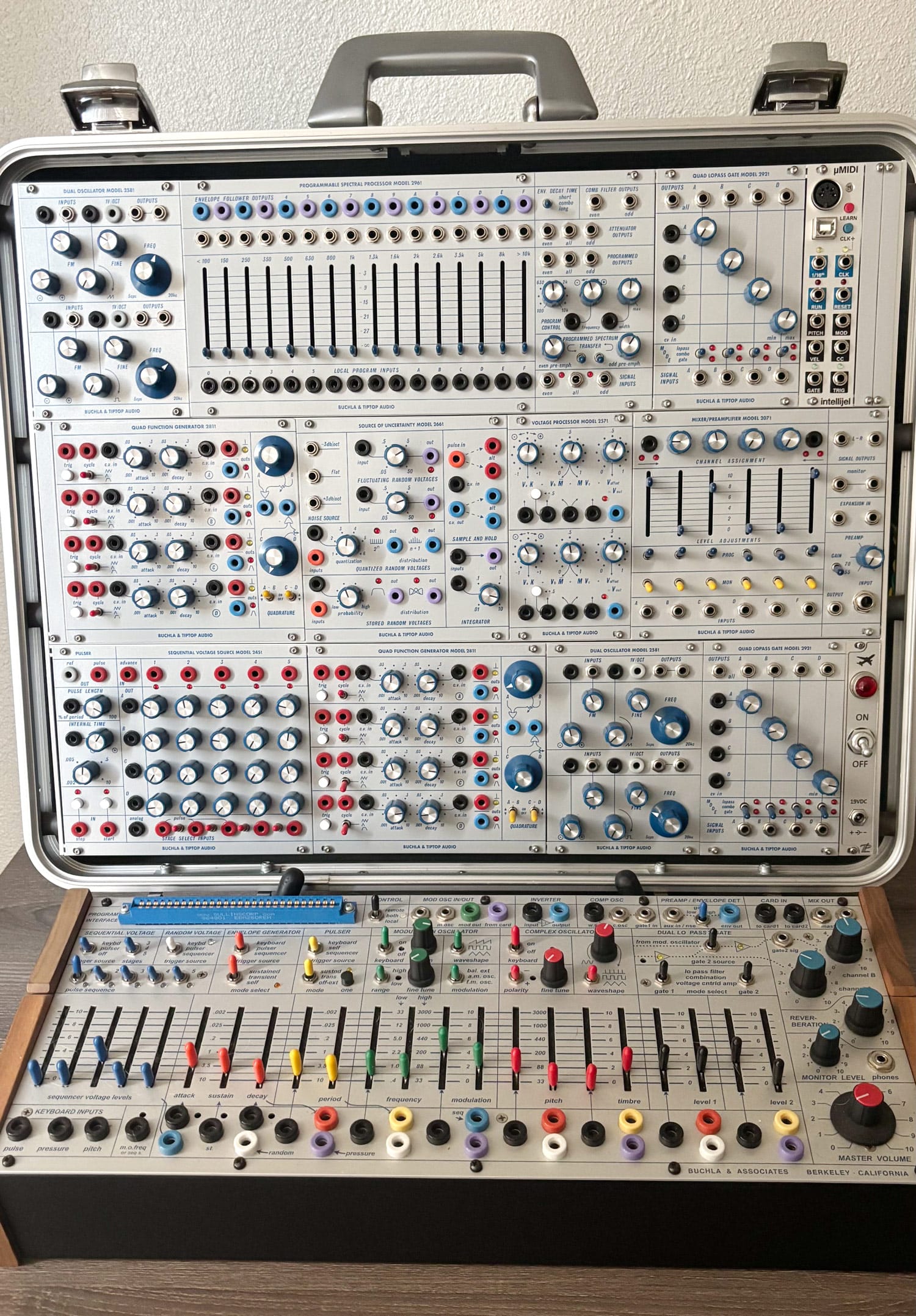
Photos by Maggie Houtz, softlylit.com
Synthesis, controlled chaos, and creativity
Evan began working with Reaktor in 2003, creating his own patches and striving to develop interesting and organic modulation systems.
“This has definitely continued to inform how I think about music – using randomness to introduce an element of controlled chaos, and let the synth voices paint outside the lines to see what happens.”
“By nature, when I’m working with modular, there are limitations to what can be done based on what modules are available.
“Helix was created using a small 5U Dotcom system, which set up the main idea and then allowed for multiple passes and the building of different patches to explore the theme. A lot less complex than what can be done with Eurorack, but it was the right tool for the job and expressed the sound and vibe that I was going for.”
“As much as I am always chasing analog tone and timbre, I am absolutely not a purist, and am happy to use VCV Rack or Softube Modular, often integrated with external hardware, if that is what is necessary to realize what I am hearing in my head. My Secret Entries into Darkness album was just 5U Dotcom and a Kyma Capybara – lots of clean analog tone, deeply processed and manipulated via DSP.”
“I like having all the colors to paint with, and each oscillator voice and filter topology has its own soul, so it’s always situational for me. I usually hear what comes next in a piece, so I have an idea for what gear it’s going to take to render that.
“Always need a Moog voice, love Buchla tone, need at least one solid polysynth, and the rest to taste.
“Big fan of ARPs as well – deeply expressive and unique – though my 2600 is sadly sold to keep the lights on between tours and albums.”
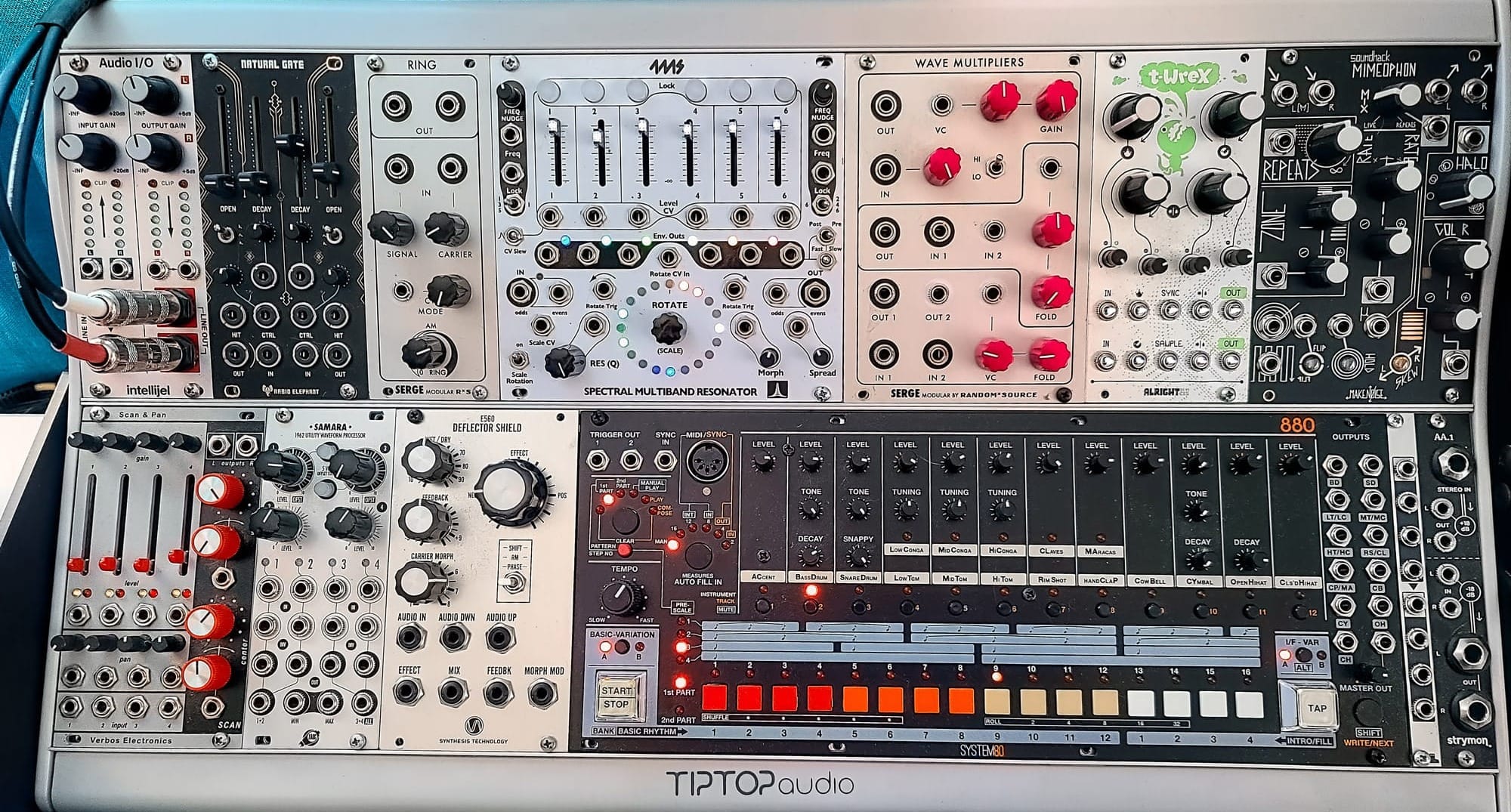
“As I mentioned above, the setup often changes. I buy gear and am obsessed with it, then sell it when I get GAS for the new, shiny, and interesting thing. At the moment, half of my studio is in storage in Hawaii, including most of the Eurorack and ARP stuff, as I just moved back to the mainland, so it’s a smaller setup.
“Currently, I have a TipTop Euro Buchla rack, Buchla Music Easel, Erica Synths Syntx II, Arturia Polybrute, GS e7, Moog Voyager, some outboard FX, and lots and lots of plugins in the box, Softube and UAD being my most used of those. Currently strongly eyeing the Adamsynths Warthog, as the built-in preset management and DAW integration in a modular seems very, very interesting and useful to me.”

Robot jazz: interacting with randomness
“Controlled randomness is huge for me. Especially randomness interacting with other randomness. It can be random gates, a Source of Uncertainty, or anything else that has a mind of its own. I first learned this using a sequential switch on Verbos modules in my Eurorack rig. Sending LFOs, sequences, random generators, looping envelopes, etc., into the switch and then the output into a pitch quantizer can yield very magical results.
“I always have at least one element of a patch which is not under my control, because that is where the magic happens.”
“It feels like a sort of robot jazz – chaos under control – letting the randomness express itself with gentle guidance, opening and closing the range on the pitch quantizer to control how far up and down the modulations can reach.”
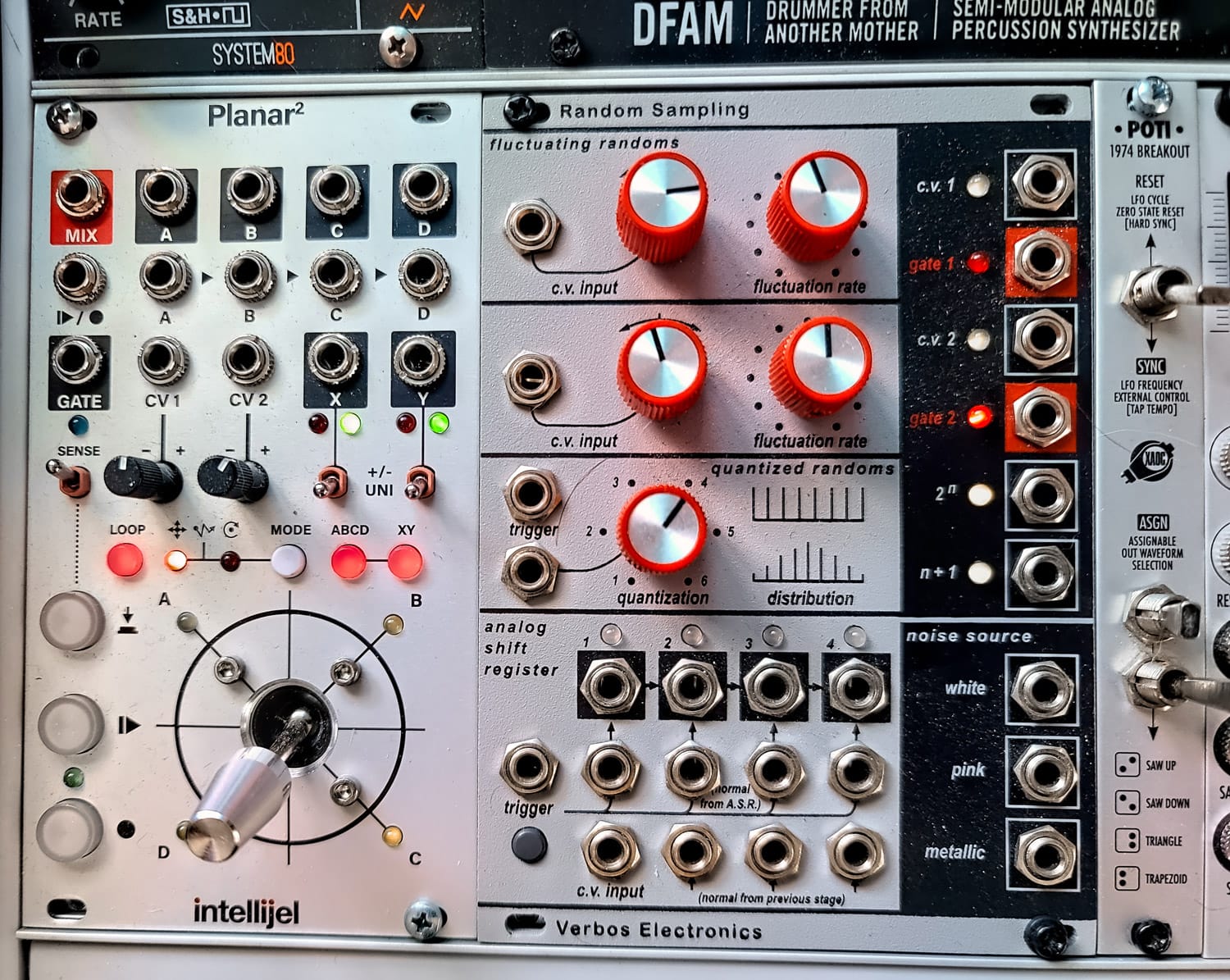
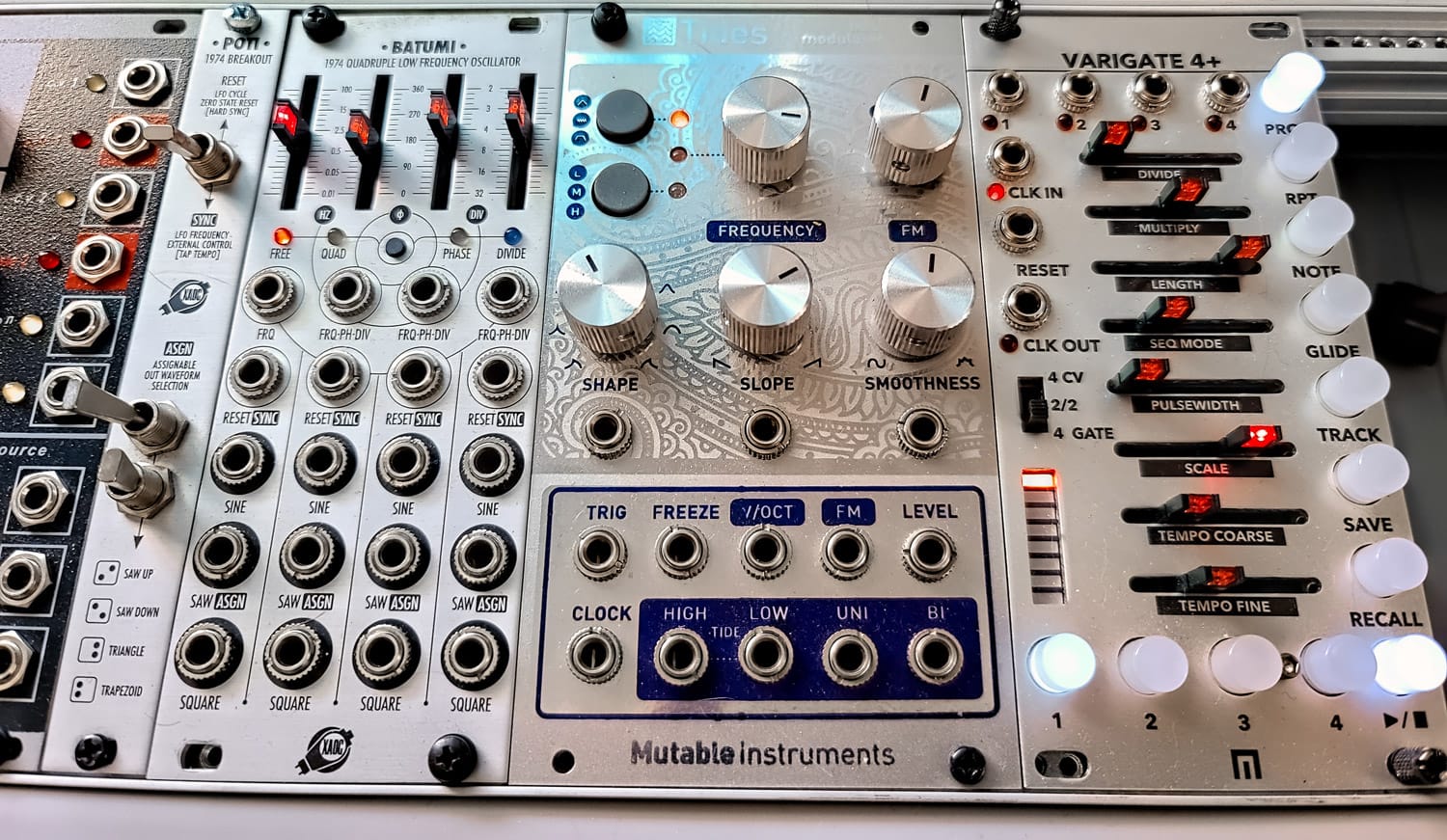
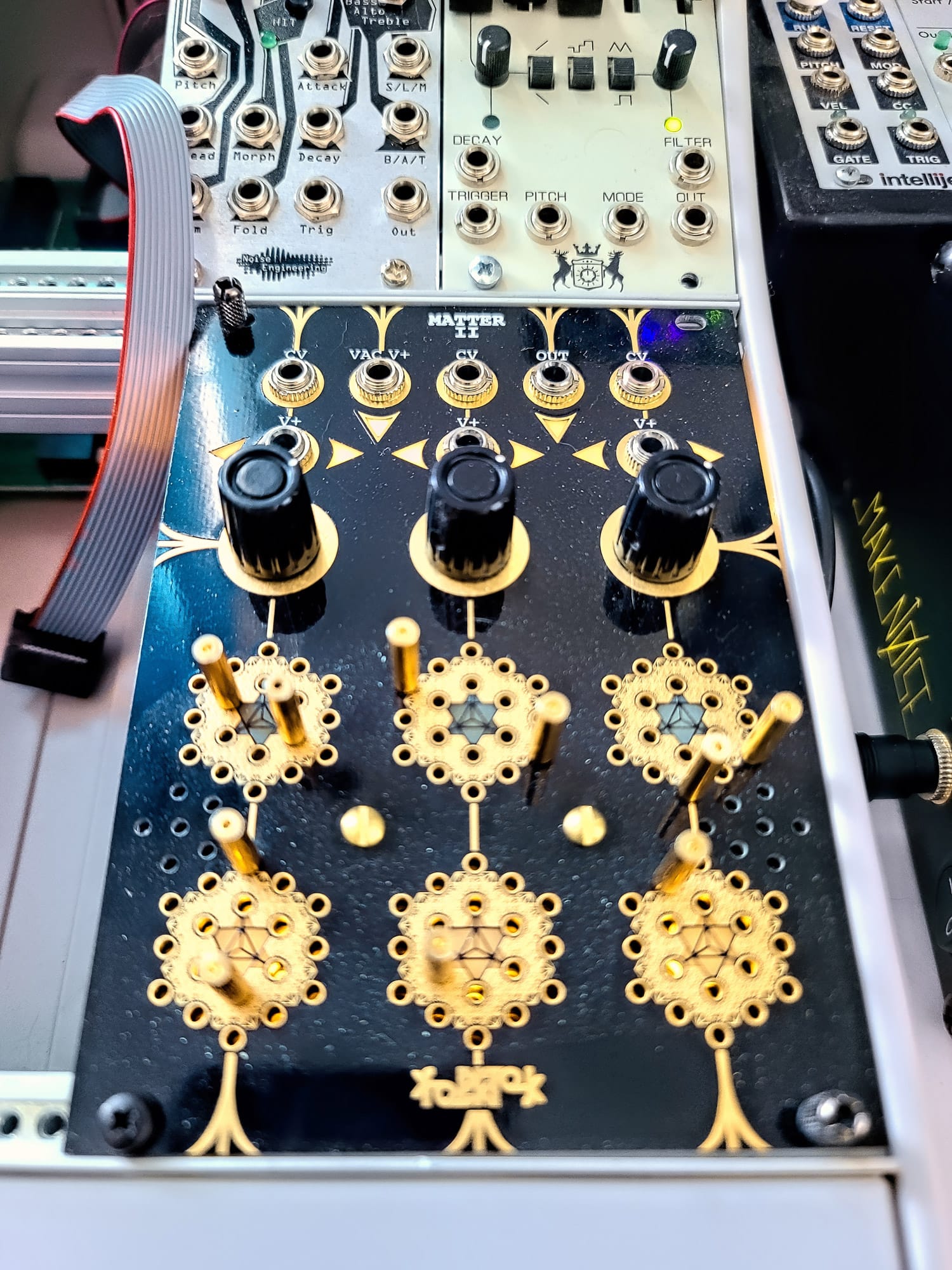
“You can hear this with the main lead that comes in at 1:20 in Heart Logic. It’s playful, meandering, and expressive, and feels like an improvisation. Still, it's this same technique I’m discussing – modulating pitch through multiple sources as well as gate frequency to really let it dance around and find its own way.”
“This was the first time I really explored this concept, and it has continued to inform my process ever since, allowing for a bit of the unknown to always seep through the cracks and make way for the unexpected.”
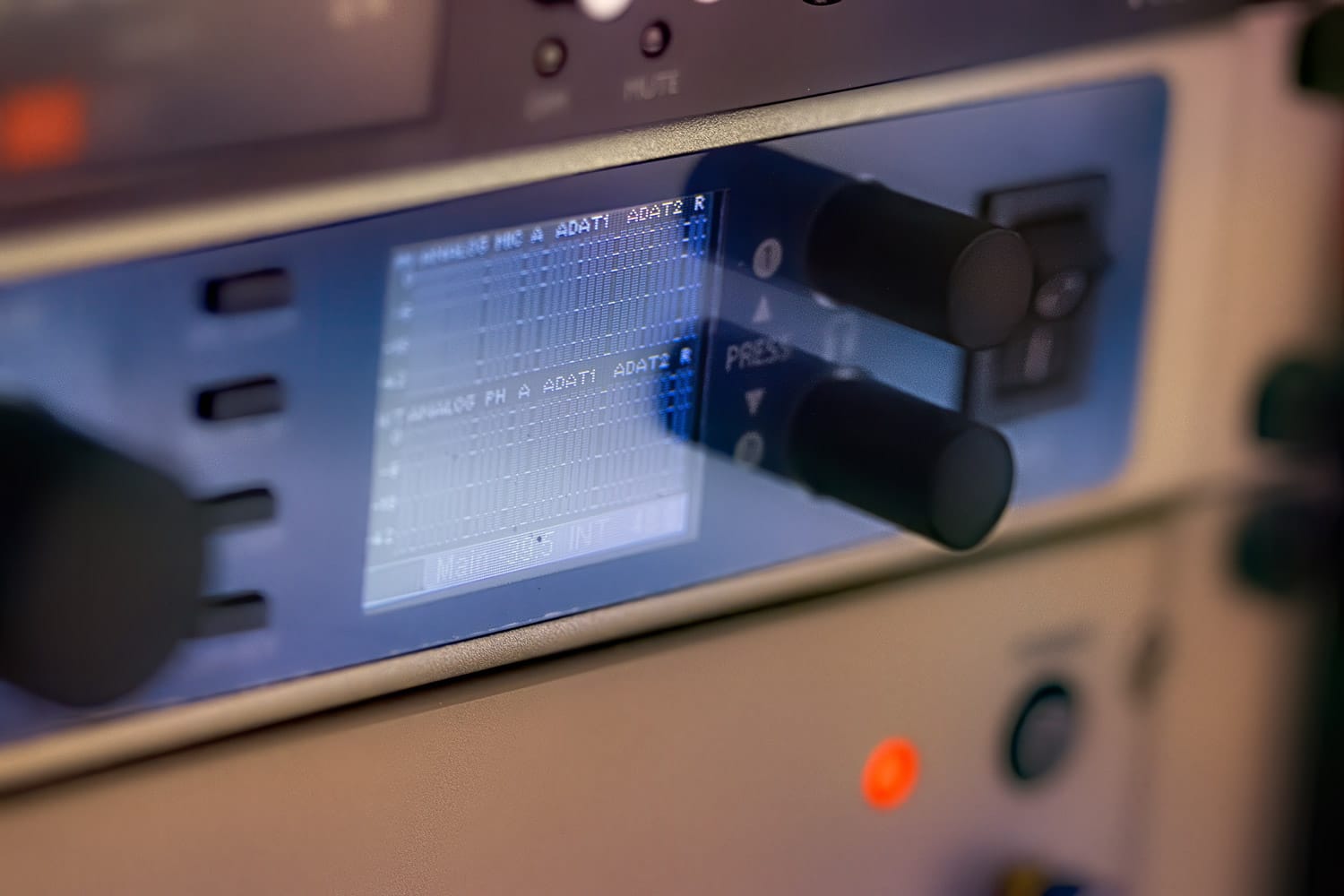
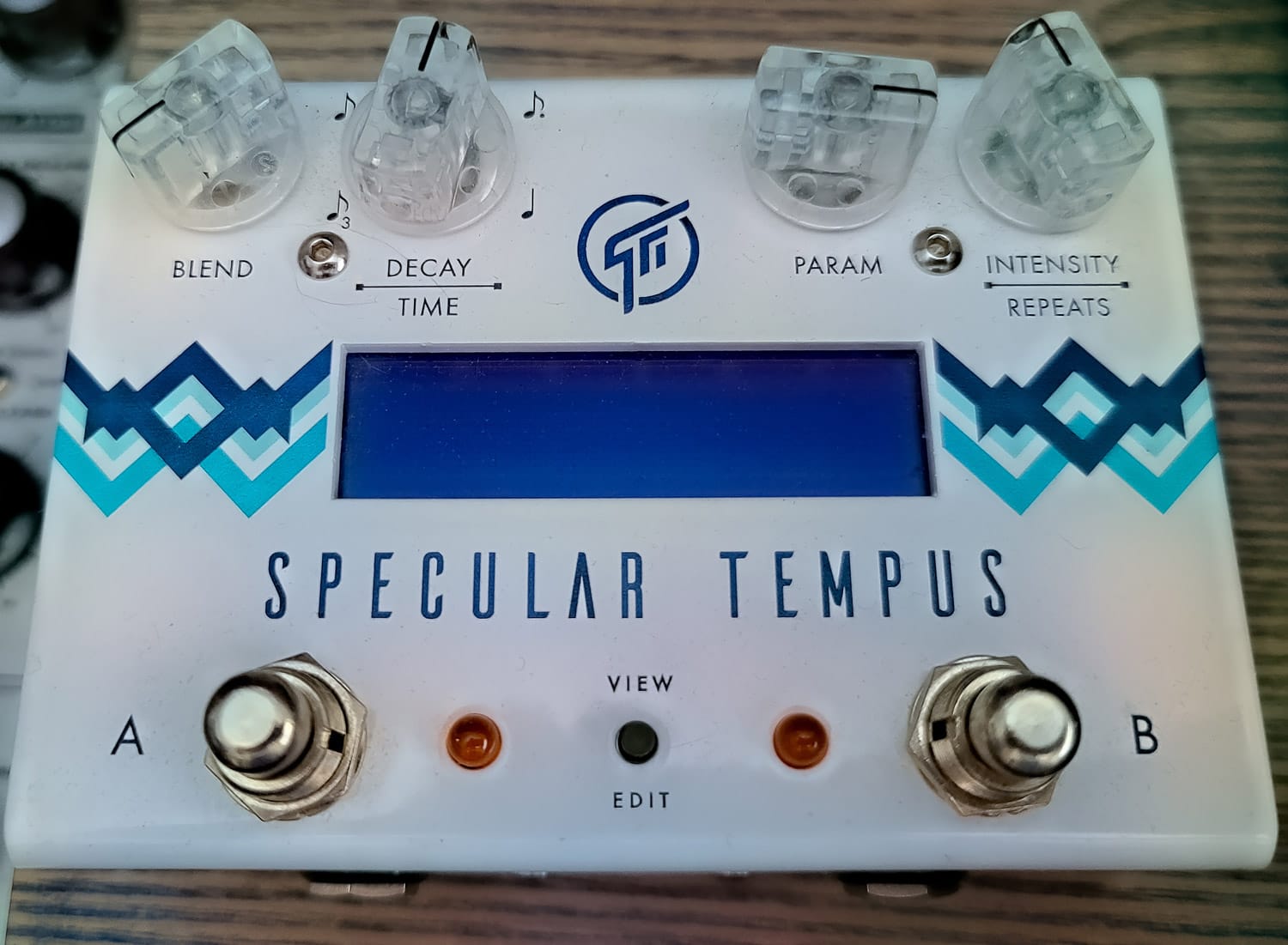
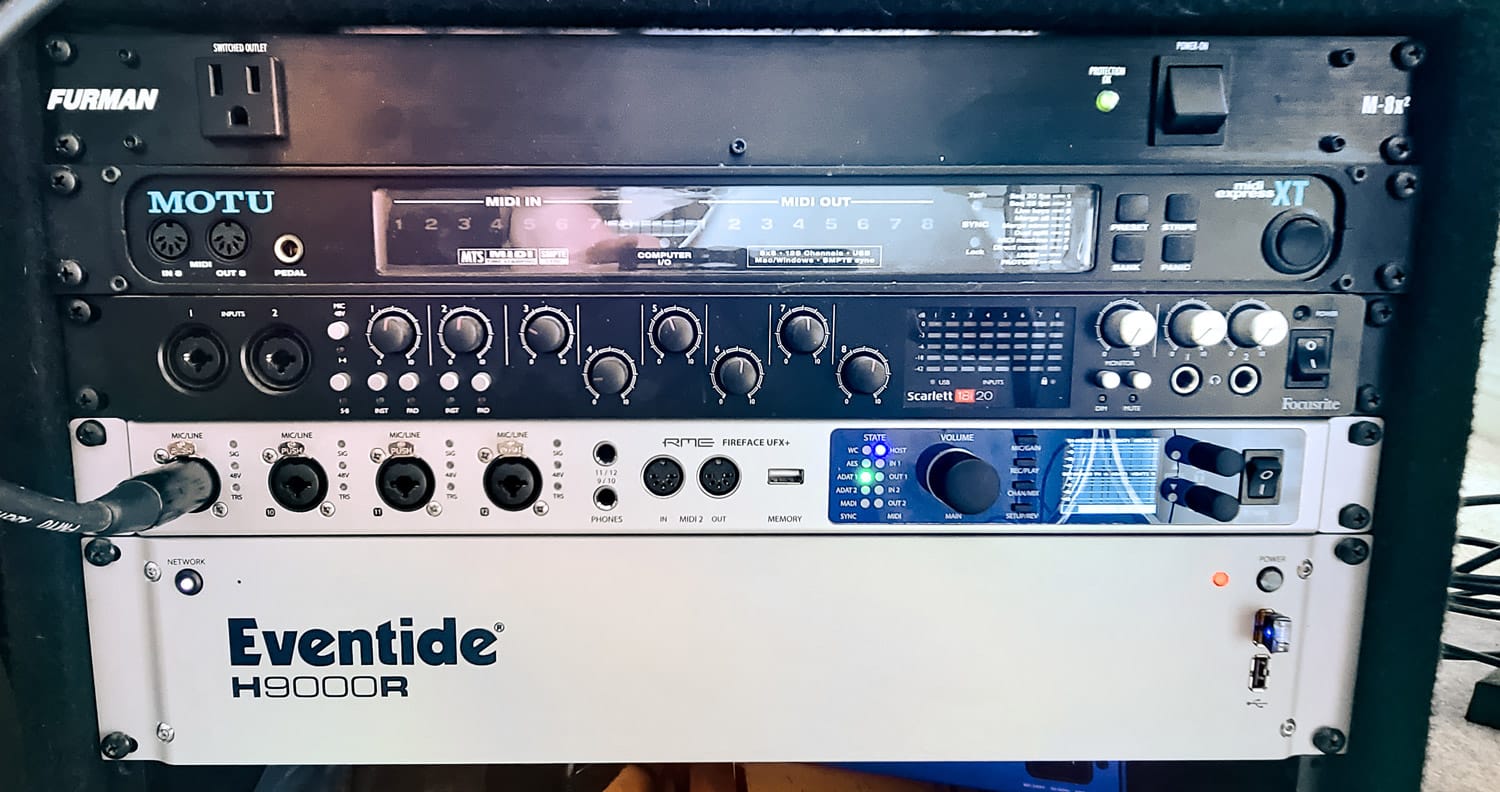
Effects, tone, layering, and EQ
On ‘Echoes of Orion’, spatial effects are very prominent. However, there's a balance to strike, which Evan is very observant about.
“You can never go wrong with reverb and delay, and I will never have enough to be honest. Using reverb on a send and EQing it as if it were its own part is very helpful in having a massive space without frequency masking and buildup.
“I’m quite fond of Newfangled Audio Recirculate, since you can process, duck, filter, and work with the delay lines to get them to sit just right. Automating FX sends is something I do often so parts move around in space – getting more distant and washing out during transitions, then coming back dry to take prominence again.”
The blend of organic and synthesized sounds is equally captivating, and here EQ and mixing are key to Evan.
“I’m definitely chasing tone, trying to get things to sound warm – lots of subtle saturation, tape emulation, Pultec-style EQ, and EQ as a colorizer instead of just a surgical tool.
“I’ve always tried to push synths to be expressive like an acoustic instrument. I’m not focused on contrast, more on the glue and how everything makes sense in relation to what is around it.
“I’ve switched my mixdown process out of Ableton and Bitwig into UAD Luna. Once the composition is done, everything gets bounced down, and I try to approach the mix with my ears instead of my eyes, using Luna like an analog console and trusting my gut and feeling.
“The bus summing in Luna does something really special, and helps bring disparate elements together and make them feel like part of the same recording session, even when they’re a mix of outboard and VSTs.”

Arpeggios and leads
The organic nature of arpeggio lines on Bluetech albums is always intriguing and almost hypnotizing. Layering and tweaking are key here.
“This is situational for sure – listening for what the part is. I often start with an arpeggiator, then record it to MIDI so I can tweak it or evolve it over time.
“Layering is deeply ingrained in how I think about sounds. I always like to have at least 2 or 3 synth parts in an arpeggio – not always playing the same notes, maybe in different time signatures – allowing for three-dimensionality and movement. Instead of a single arp, it’s like a geometric sculpture turning in the wind, revealing new angles and layers.”
For lead sounds, Evan uses different synths and prefers to keep things simple. The leads on the Spacehop Chronicles 2 album are a great example of this.
“When I’m in a lead sort of mode, I always start with just a pure saw wave and start shaping from there.
“The first track, Kudryavka, is Moog. The track Artemis Program has at least three layers of the main expressive voice, with some elements pushed so far back in the mix you wouldn’t know they were there, adding width, texture, and breathiness. I wanted that lead to fill up the top end, so it needed layering.”


“The Arturia Polybrute is a very expressive synth, so it’s nice to have multiple vectors of playable modulation to really get a lead to tell a story.”
Approaching composing and producing
When asked about how he approaches composing and producing, Evan is clear:
“It’s often just showing up. I hear a lot of music in my dreams, working out at the gym, doing chores. Once something is stuck in my brain and starts to unfold, I know it’s time to go get it sketched out and see if it wants to come play and become something more.
It takes time and dedication – sitting down even when he doesn’t feel like it – allowing for quietness and humble appreciation of the creative flow of inspiration and passion.
“This record took a very, very long time, as unfortunately, I’m not a person who has ever been able to work when things are a struggle. Even if I’m expressing difficult emotions, I need to be well-rested, well-fed, not stressed, and have everything just right for the goodness to come through.
“It’s a challenge with sirens, pets needing attention, and admin duties for the label… I need a clean house, a good night’s rest, and a feeling of equanimity and balance to open those doors and bring work through that feels valid and substantial.”

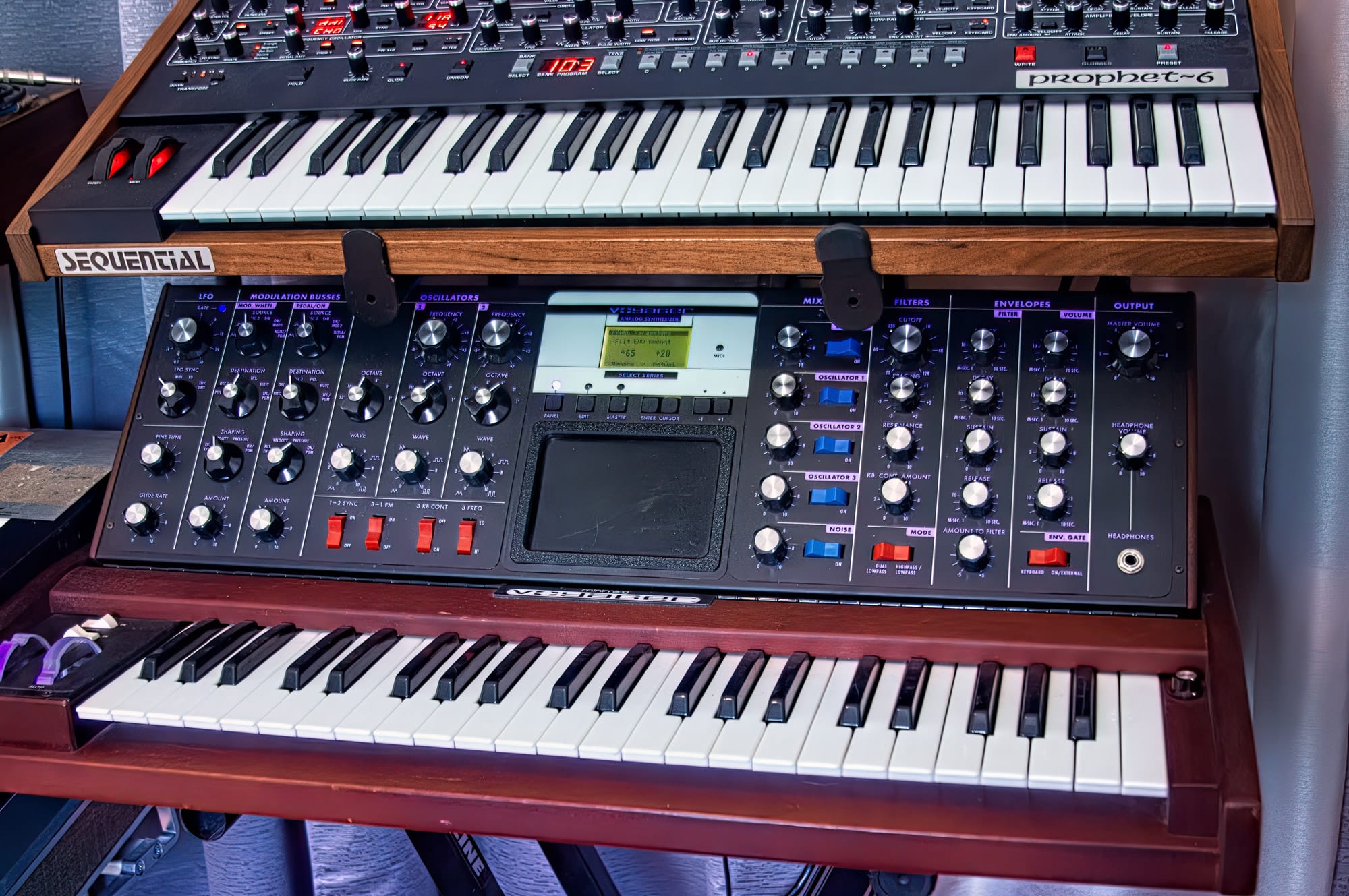
So how does one progress on songs, even knowing when they're finished? For Evan, it's “100 percent just a feeling.”
“The music is always the boss, and I let it tell me what needs to happen, doing my best to get ego out of the way and be present for the unexpected.
“Many tracks sit at 90 percent done for a long time, and this is where a lot of the mixing and engineering process happens. Then I feel the icing on top, often a dreamy pad or lead or something that just needs to sit over everything else and blanket it with meaning.
“When the music gains that expansive out-of-body sort of feeling, I know it’s done. I don’t always get there, but certainly try to keep working until that happens.”
“I’ve made enough records that I trust the process and know when it’s time to show up.”
”After every finished project, there is a postpartum period where the flow stops, and I can’t hear anything for a bit. I take that time to go for walks, read, enjoy my loved ones, trusting that when it’s time, the flow will come back.”
Art of the album
As a skilled graphic artist, and running Triangularis Design with his co-founder Ian, Evan's work with sound and design merge seamlessly and inform each other.
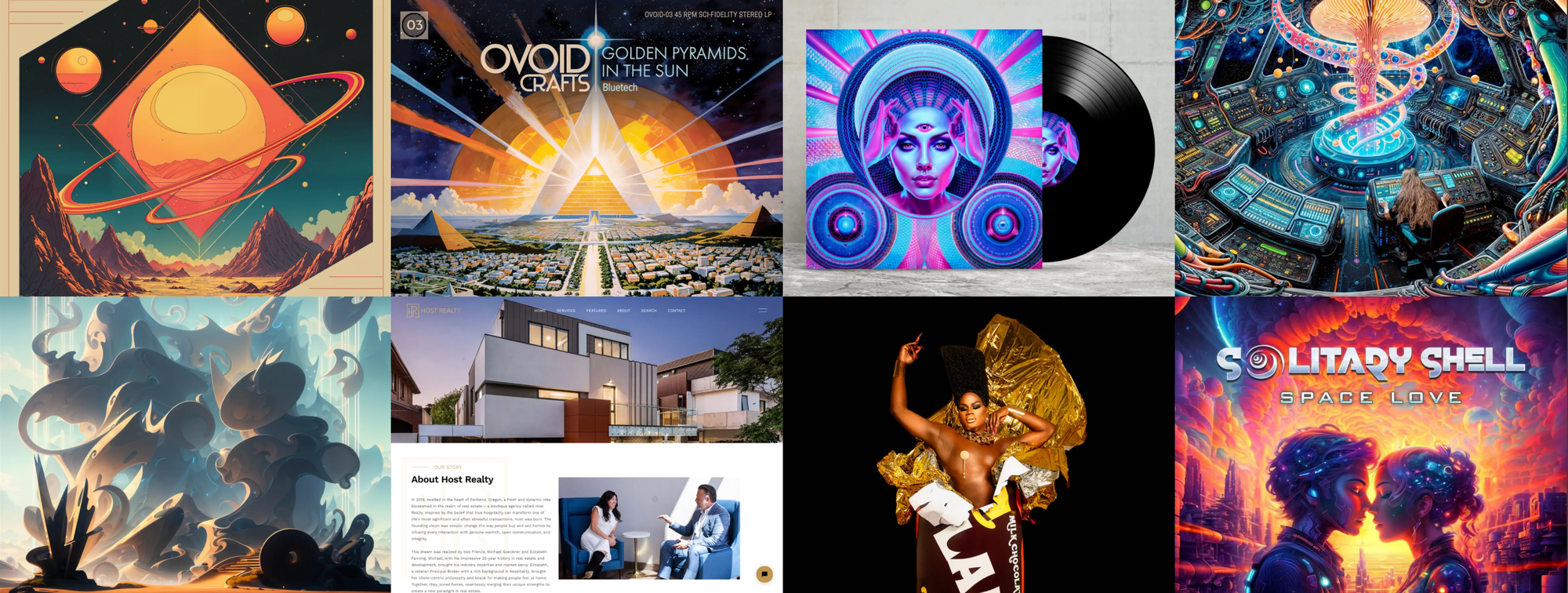
“I often work on them in tandem. When working on music, I spend a lot of time just listening and waiting to hear what the next thing that needs to happen is, so I’ll have a specific section or the whole track on loop while I work on art or animation.
“The soft focus really helps to open up pathways and make me more sensitive to the external signals and voices which inform the composition process.”
The core concept concept of “the album” is close to Evan's heart:
“In all honesty, I’ve chosen to ignore any rules of engagement enforced by streaming services, especially Spotify. I’ve always been an album person and tend to listen to albums almost exclusively all the way through.
“It’s the journey that fleshes out the experience – moving from one place to another adds depth and emotional resonance.”
“Spacehop Chronicles 2 was always meant to be a continuous mix, so when I began working on it, I knew everything had to fit together, and composed the album sequentially – with the first track being the only exception, and actually the last track created. I thought it was done, then felt it needed a quick overture to establish space, and added it right at the end, knowing it had to flow into Restless.”
Musical inspirations and recommendations?
“Now this is a hard question to answer. There are truly so many, and I listen to a lot of music across many different genres.
“Lately I have been blown away by Photay and his intricate production and harmonic complexity, the most recent Barker album is amazing, Röyksopp because they are so good at creating atmosphere and vibe while still being accessible, Lisa Bella Donna for her mastery of synthesis and pure shreddage, Lindstrøm for his epic space disco jams… the list goes on and on.”
Bluetech ft. Lisa Bella Donna - Chronos Empire Of Rust (Official Video) Music & Video by Bluetech, with Moog synthesizer and additional audio production by Lisa Bella Donna. Mastering by Shawn at audibleoddities.com

Bluetech, the alias of Evan Marc Bartholomew, is a visionary force in electronic music, seamlessly blending ambient, downtempo, and progressive dance genres. With a career spanning two decades, Bluetech has charted on Billboard's Top Dance/Electronic Albums and released on many prestigious labels.
His sound, characterized by rich emotional textures and intricate sound design, fuses organic elements with cutting-edge digital techniques. Beyond his solo work, Bluetech has collaborated with electronic music pioneers like Steve Hillage and Steve Moore, and co-founded Invisible Allies with KiloWatts.
A multidisciplinary artist, he's also a skilled visual designer, founder of Behind the Sky Music, and founder of the immersive multimedia agency Triangularis.
This diverse artistic palette informs Bluetech's approach to music, resulting in performances that range from ambient journeys to driving dance floor experiences.
Through his innovative production techniques and genre-spanning creativity, Bluetech continues to shape the electronic music landscape and inspire artists across various disciplines.



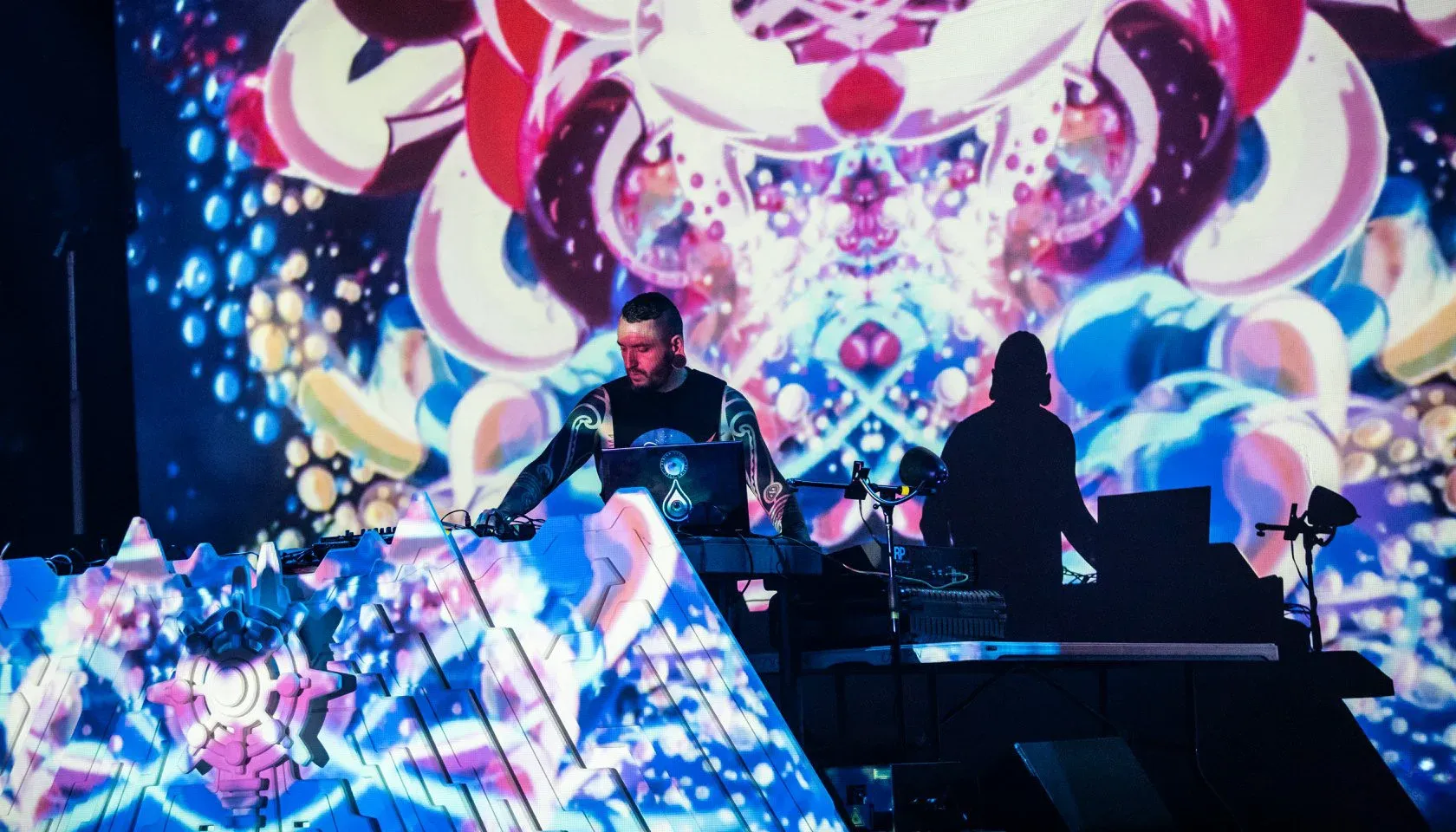




Comments